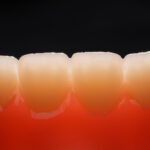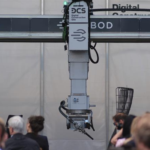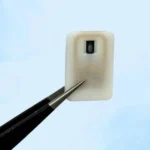Researchers at Duke University and Harvard Medical School have made strides in 3D printing by developing a bio-compatible ink that solidifies in deep tissues using ultrasound waves. This innovation enables the creation of 3D structures in biomedical fields, such as bone healing and heart valve repair. The technique has recently featured in the journal Science, and offers a novel approach to 3D printing in medicine.
Traditional 3D printing methods, especially in biomedicine, face limitations due to their reliance on light, which cannot penetrate deep tissues. The newly developed method, deep-penetrating acoustic volumetric printing (DVAP), uses a specialized ink, known as sono-ink, that responds to sound waves instead of light. This approach significantly extends the reach of 3D printing into deeper tissues with high precision.

DVAP operates on the sonothermal effect, where absorbed soundwaves elevate temperatures to solidify the ink. The sono-ink, a blend of hydrogels, microparticles, and molecules, is designed to react specifically to ultrasound waves. The ultrasound printing technology, pioneered by Junjie Yao at Duke University, allows for the creation of diverse structures, such as bone-like scaffolds and hydrogel bubbles for organ applications.
“We’re still far from bringing this tool into the clinic, but these tests reaffirmed the potential of this technology,” said Zhang.
“Because we can print through tissue, it allows for a lot of potential applications in surgery and therapy that traditionally involve very invasive and disruptive methods,” said Junjie Yao, associate professor of biomedical engineering at Duke.
“This work opens up an exciting new avenue in the 3D printing world, and we’re excited to explore the potential of this tool together.”
The versatility of DVAP is further demonstrated through its adjustable composition, enabling the creation of structures with varying durability and degradability. The team successfully conducted tests on sealing heart sections in a goat, tissue regeneration in a chicken leg bone defect model, and therapeutic drug delivery using chemotherapy-infused ink in liver tissue. These tests showcased DVAP’s potential in various medical applications without damaging surrounding tissues.
You can read the research paper, titled “Self-enhancing sono-inks enable deep-penetration acoustic volumetric printing” over at this link.
Come and let us know your thoughts on our Facebook, X, and LinkedIn pages, and don’t forget to sign up for our weekly additive manufacturing newsletter to get all the latest stories delivered right to your inbox.









